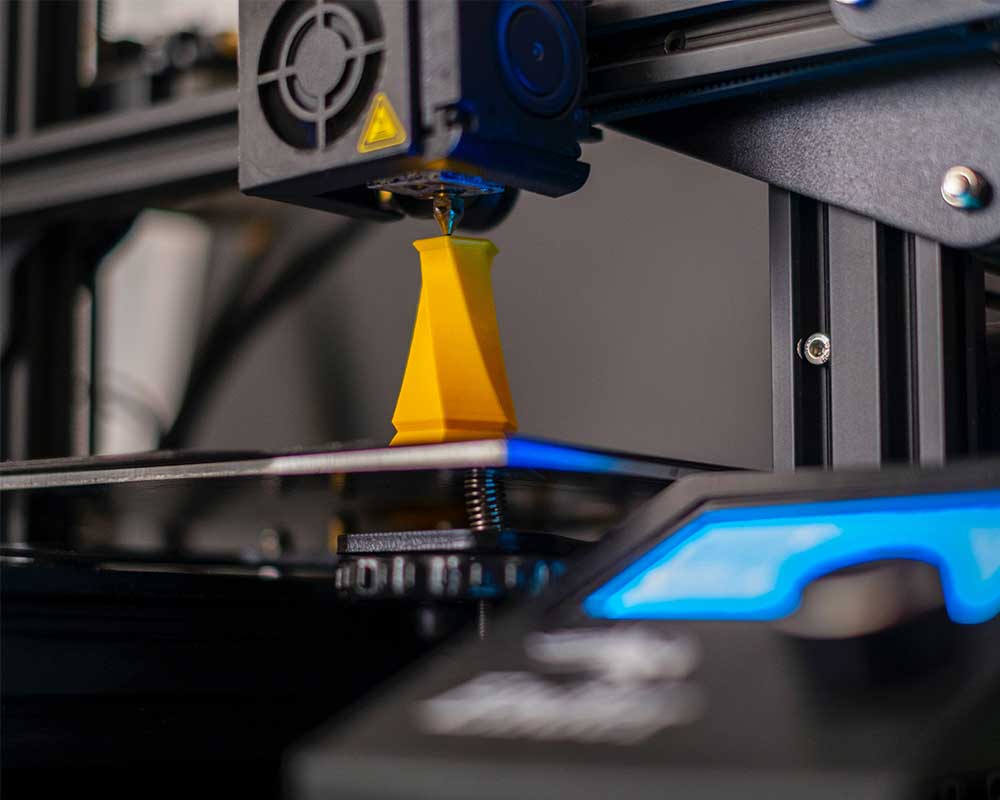What Are Desktop 3D Printers and Industrial Grade 3d Printers?
Like the world's first computer, 3D printers were only used in a very limited number of scenarios at the beginning of their existence because of their size and cost. As the technology increasingly developing, there were gradually desktop and industrial grade 3D printers for high-end manufacturing.
Desktop 3D printers, literally, are printers that can be placed on a desk for printing work, which are easy to operate, portable and not too expensive, suitable for use in homes, schools and other places.
Industrial grade 3D printers, as the name implies, are generally used in factories and other scenarios, and should be able to meet both the needs of factory-based mass production and customer-oriented high-end manufacturing standards.

The Difference Between Desktop and Industrial Grade 3d Printers
1. Printing scenario and environment
The most obvious difference between desktop 3D printers and industrial 3D printers can be seen by their names. Desktop 3D printers are smaller and belong to office equipment, which can be used directly in the office and have a slight impact on the environment, such as noise and smell during use.
Industrial grade 3D printers are larger and can only be placed in factories. For example, printing of metals and other materials requires the application of high temperatures from lasers or high-energy electron beams to melt them, so they have a greater impact on the environment.
2. Generic Indicators
Industrial grade 3D printers are generally far better than desktop grade 3D printers in some general metrics, such as print size, print quantity, print speed, print accuracy, print support, print success rate, etc. However, these performance improvements also multiply the cost of industrial-grade 3D printers, which is the only way to meet the requirements of industrial-scale manufacturing.
3. Technology Types and Printing Materials
At present, the main technology type of desktop 3D printer is FDM (Fused Deposition Modeling) fused deposition molding and light curing, light curing mainly includes SLA (Stereo Lithography Apparatus), DLP (Digital Light Processing), LCD ( Liquid Crystal Display), while industrial printers basically include all existing types of 3D printing technology.
Due to the difference in technology types, the two printer types use different materials, desktop 3D printing using materials mainly ABS (Acrylonitrile Butadiene Styrene), PLA (polylactic acid), photosensitive resin and other non-metallic materials, they can process metal equipment is still relatively small. Industrial grade 3D printers can apply a lot of materials, including plastic, acrylic, glass, ceramic, resin, gold, silver, titanium and stainless steel and other alloys, which can be simply divided into two categories: metal and non-metal.
The difference between the types of printing materials that these two types of printers can currently use has become smaller as the technology has evolved, as desktop-grade metal printing has now begun to appear.
4. Application Areas
Desktop 3D printers are mainly used in industrial design, creative design, innovation education, model DIY and other fields, the users are generally individuals, schools.
Industrial 3D printers are mainly used in aerospace, automotive, dentistry, electronic products and other demanding high precision fields, the users are generally large enterprises.
5. Discussion
From the final model of the finished product, compared to the industrial-grade 3D printers that occupy the main part of 3D printing, desktop 3D printers can be said to have the disadvantage of only meeting some basic requirements, but it is because of its low cost and low price, in order to make individuals and families, small and medium-sized groups can choose the right 3D printer on demand, so that 3D printing technology faster and wider development and promotion up.
With the development of computer information, mechanical control, materials and other technologies that constitute 3D printing technology, the technical maturity of desktop-level 3D printing technology, printing efficiency and accuracy, etc. is getting higher and higher, and the performance value is getting closer to industrial-grade 3D printers, providing more possibilities for the creation of the world, the world of creation.


Leave a comment